
Guide: How to have effective brainstorms every time
Reading time: about 16 min
It’s no secret that brainstorming often gets a bad rap. And unfortunately, a lot of the criticism brainstorming has been receiving for a decade or more has been validated by many people’s first-hand experience with brainstorming:
- Teams converge too quickly around a small number of ideas.
- Unengaged collaborators bring down the energy and creativity of the group as a whole.
- Ideas get lost to the ether while participants wait their turn to share.
- Extroverted or loud attendees dominate the discussion over more introverted collaborators.
- Too many random participants are invited without any real reason for them being involved nor any context on why they were invited.
- Brainstorms are scheduled without a clear goal for what the team is trying to accomplish.
But as the trend toward hybrid and remote work persists, it’s clear that brainstorming is here to stay—and luckily, teams are learning that the issues above aren’t inherent to the practice of brainstorming itself, but rather are hallmarks of bad brainstorming execution.
In other words: It doesn’t have to be this way!
If you feel like your team is spinning its wheels on less-than-effective brainstorming that is more performative than purposeful, we’re here to help.
Whether you’re a leader, a regular facilitator, or just a participant, this guide will help you build the in-person and virtual brainstorming skills needed to actually drive impact and innovation for your business—while helping you get better ideas, get better engagement, and build stronger teams.
What is the purpose of brainstorming?
All this evidence that the way most teams execute brainstorming is flawed begs the question: Why do we brainstorm at all?
Effective brainstorming allows teams to:
- Generate large quantities of ideas quickly: With a meaningful problem to solve, a context-filled agenda provided beforehand, and an experienced facilitator, it is possible to have a brainstorming session that generates many high-quality ideas more efficiently than each individual could do on their own.
- Involve stakeholders early in the process: Brainstorming with key stakeholders from the start—instead of involving them after you’ve already generated ideas—can save you time and money because you will avoid decisions that aren’t feasible, are too costly, or won’t have the necessary personnel available to make them successful. This consideration becomes especially important during economic downturns when companies are tightening budgets and evaluating each dollar of spend.
- Get multiple perspectives from different team members: Each participant will have unique insights informed by their role, team, background, and personality, and brainstorming is one of the best ways to get diverse voices involved from the start.
- Uncover opportunities for innovation: We often think about brainstorming in the context of producing some kind of end product (like a marketing asset, a piece of imagery, or a literal product). But brainstorming process improvements, bottlenecks that could be removed, team working agreements, or workback schedules could uncover just as much opportunity to innovate as a business and impact your bottom line.
- Build team unity and connectivity: Developing good brainstorming habits—and familiarity with how your team thinks and comes up with good ideas—pays dividends later on when you have more challenging problems to tackle because you know who to put on certain projects and how to set yourself up for success. Good brainstorms can also improve buy-in, performance, and morale because team members were able to voice their opinions on a project.

Want to avoid disjointed communication and lack of innovation in your brainstorms? Check out our on-demand webinar on strengthening hybrid collaboration.
Watch nowHow to participate in an effective brainstorm
To set your brainstorm up for success, it’s important to follow some basic guidelines for each stage of the brainstorming process.
Before you brainstorm
Send an agenda
Everyone dreads getting pinged with “Hey, can I grab you for a quick call?” out of nowhere. Confusion and annoyance is not a good foot to start on, yet this method of initiating a braindump out of nowhere is all too common.
By preparing an agenda beforehand, you accomplish two things:
- You clarify your own thinking and research on the problem to be solved instead of putting the burden of understanding the problem immediately on other people. This preparation might cause you to realize you can actually invite fewer people to the meeting than you initially thought so you can prevent bloating people’s calendars.
- You show respect to the time, attention, and creativity of those you are inviting by giving them appropriate context and an opportunity to do deep thinking beforehand and ask any clarifying questions. This is especially impactful for more introverted collaborators who aren’t great thinkers when put on the spot.
If you’re invited to a brainstorming session that doesn’t have an agenda attached: Ask for one! If you’re feeling confused or out of the loop on why a brainstorming session was added to your calendar without context, chances are other invitees are, too. Speak up to get the information you need—and if no agenda is provided, you might suggest postponing the meeting or coordinating asynchronously so you don’t waste valuable time.

Set up your meeting board in Lucidspark
By recording everything in a persistent location like a team huddle board, you can seamlessly move from live ideation as a group to asynchronous idea pruning—or vice versa, if you’d prefer to brainstorm asynchronously and individually and then meet afterward to discuss ideas live.
As a bonus, you can use Lucid’s integration with Google Calendar to attach your team board to all your meeting invites, essentially allowing it to function as an agenda!
Understand your team’s preferred collaboration styles
Whether you’re facilitating a brainstorming session or just participating in one, knowing the mix of introspective, expressive, and relational collaborators in your group can help you better tailor your discussion to make sure everyone feels heard.
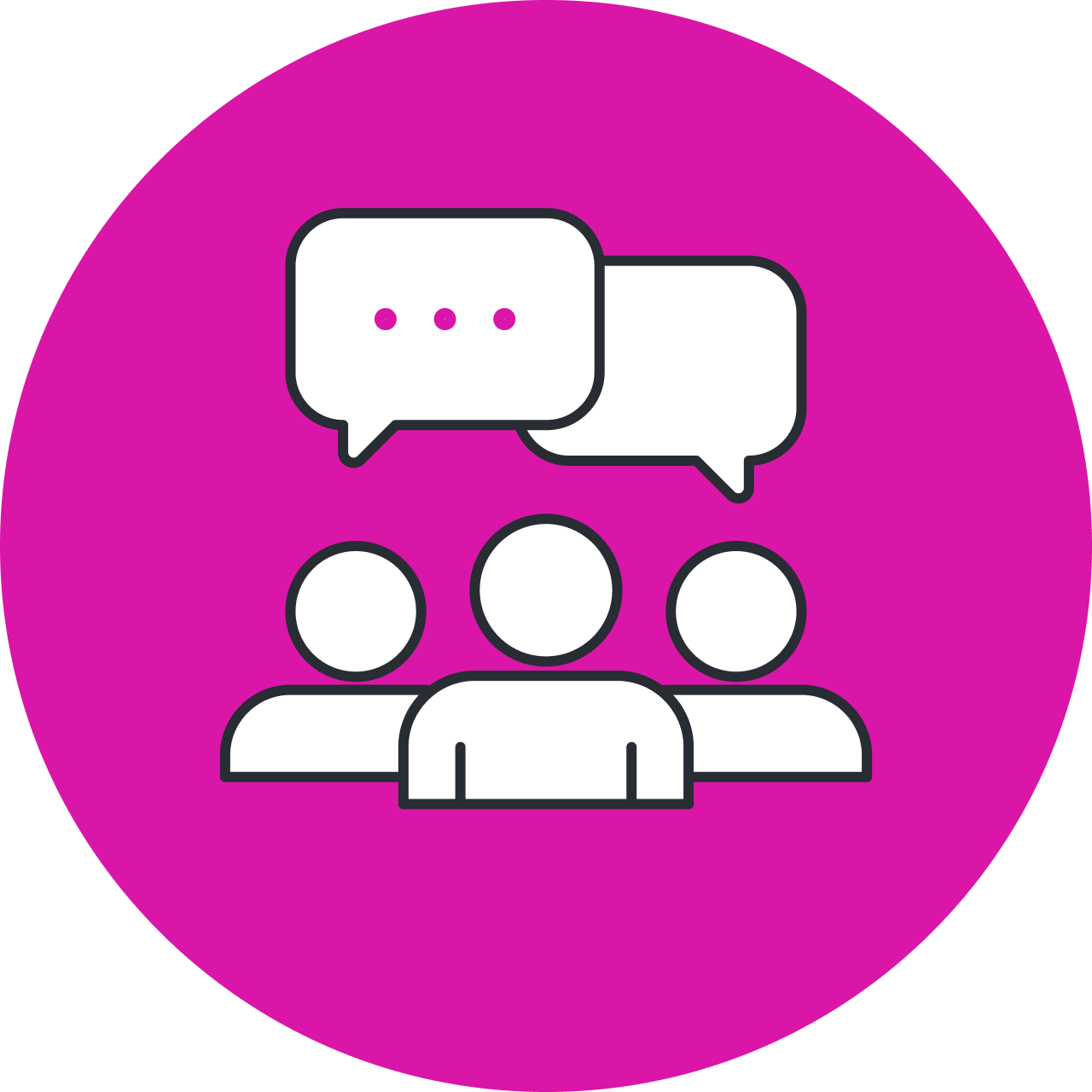
Discover the collaboration styles on your team so you can collaborate more effectively as a group.
Take the quizDuring your brainstorm
Choose a framework or template
Many teams struggle with striking a balance between brainstorms that are so freeform and unfocused they don’t generate any feasible ideas, and brainstorms that are so tightly structured they don’t allow any room for creativity.
Using a template as a framework for your brainstorming can solve these problems by providing just enough structure to focus your ideation on a discrete problem while still giving space for documenting novel idea—assuming you’re utilizing a visual canvas like Lucid that lets you capture off-the-cuff ideas more naturally and at the moment they come to mind.
Templates also lower the barrier to engagement for more reserved team members because they provide a framing device that makes it easier to generate ideas than going in cold.
Don’t worry about duplicate ideas
There is a tendency to self-prune as you brain dump and delete duplicate ideas in the name of efficiency. This is counterintuitive, as duplicate ideas sourced independently from members of your team can indicate a natural consensus. Pausing to prune duplicate ideas also slows down your own ability to come up with new ideas.
Remember: There is always time to consolidate after the team has had time to consider what you generated during your brainstorm.
Set a timer
Constraints can be useful in brainstorming sessions (especially when you have a limited amount of time with your group), and setting a timer is one of the easiest constraints you can introduce.
Try breaking up your brainstorm into discrete units—like brain-dumping, group evaluation, and voting—and set timers for each. This structure can help you maintain momentum throughout your whole brainstorm. It also prevents the slog that can happen when teams spend too much time on one phase of the brainstorm, as well as the rush that happens at the end of meetings when teams realize they spent too much time on a tangent and didn’t get to the most important items.
Break out into smaller groups
If you have a big problem to tackle, splitting your group into smaller subgroups—and then coming together at the end of the meeting to present your small groups ideas to the larger whole—can be a useful technique.
Smaller groups can also help generate more quality ideas, since each person will have more opportunity to speak up when they spend a majority of the brainstorm in a group of three or four instead of fighting for attention in a group of a dozen or more.
If you’re using Lucid, you can easily do this with Breakout Boards.

Leverage Collaborative AI
The fear of the blank page (or blank Lucid board) gets to us all. Sometimes, the hardest part of a brainstorm is getting the ball rolling. Lucid’s Collaborative AI feature can inject your brainstorming session with the spark it needs to be successful.
Give Collaborative AI a prompt and watch as it generates ideas on the fly. If those aren’t enough, all you have to do is choose your favorite idea out of the mix and generate even more ideas based on that. From there, collaborative AI can sort and synthesize your ideas, giving you more context to work with inside of your brainstorming session.
After the brainstorm
Revisit your goals
It’s easy to get caught up in the excitement of the ideation process and miss where ideas may be completely off-track from the stated brief or goal of the brainstorm that was surfaced beforehand in the agenda.
Leave time to go back through your ideas and evaluate:
- Did we accomplish what we hoped to accomplish?
- Does this meet the customer need we set out to solve for?
- Do we have enough breadth of ideas or are there other avenues we need to explore?
- Is there enough potential for depth in the ideas we do have to accomplish the needs of this project?
- Are our ideas feasible given the scope, timing, and budget of the project?
- Have we been appropriately intensive and innovative in our thinking?
Don’t be afraid to schedule more time
Sometimes a problem is too big to handle in 30 or 60 minutes. Assuming your discussion was productive and participants were engaged, consider scheduling more brainstorming time for a later date as needed.
You could invite a smaller group the second time to keep the discussion more tightly focused, and you should encourage participants to refer to the notes from the first session to treat the additional meeting as a continuation of the discussion and not a cold start.
Prioritize ideas to develop and set action items
As you do further brainstorming work, start converging around ideas and setting priorities based on your discussions with your team. You can even convert your ideas into formal action by formalizing your Lucidspark brainstorming board into Lucidchart intelligent diagrams.
Thank the participants
This one is easy! Sending a personalized message to one of your fellow collaborators acknowledging a unique idea of theirs you liked or how engaged they were in the session can strengthen the morale of the team and inspire people to engage even more in future brainstorming sessions because they feel their voice is valued.
Common brainstorming misconceptions—and how to fix them
Misconception #1: Brainstorming is only for teams that touch the product
If your assumption is that you don’t really have a need to brainstorm regularly because you aren’t on the product, design, marketing, or other so-called “creative” teams, you are incorrect!
Everyone at your company can and should be a champion of innovation, and effective brainstorming is a key to unlocking innovation in your role. You can apply brainstorming to process improvements, org design, or sales outreach techniques just as much as product launches and marketing campaigns.

Explore six common use cases (with templates) for using Lucidspark to brainstorm, including process improvements, strategic planning, and value stream mapping.
Read moreMisconception #2: There’s only one way to brainstorm
When most people think of brainstorms, they probably think of the most common application of brainstorming: meeting as a group, throwing out a bunch of random ideas without any structure, talking about a few of your favorites, and then leaving.
While freeform discussion like this has its place, if this is your only experience with brainstorming, it’s no wonder it doesn’t work for a lot of teams. The reality is there are many methods for brainstorming.
Here are three alternate brainstorming frameworks you can try:
- Brainwriting: Focuses on having participants asynchronously write ideas into a shared board first anonymously and then talk through the ideas and build off of each other’s. Brainwriting removes bias from the brainstorm process because people can’t judge the idea based on who shared it and how it was shared, and it gives people more time to be thoughtful before speaking up.

- Reverse brainstorming: Rather than thinking of a problem and then determining possible solutions, reverse brainstorming flips the script by forcing you to consider how you would achieve the exact opposite of what you want.
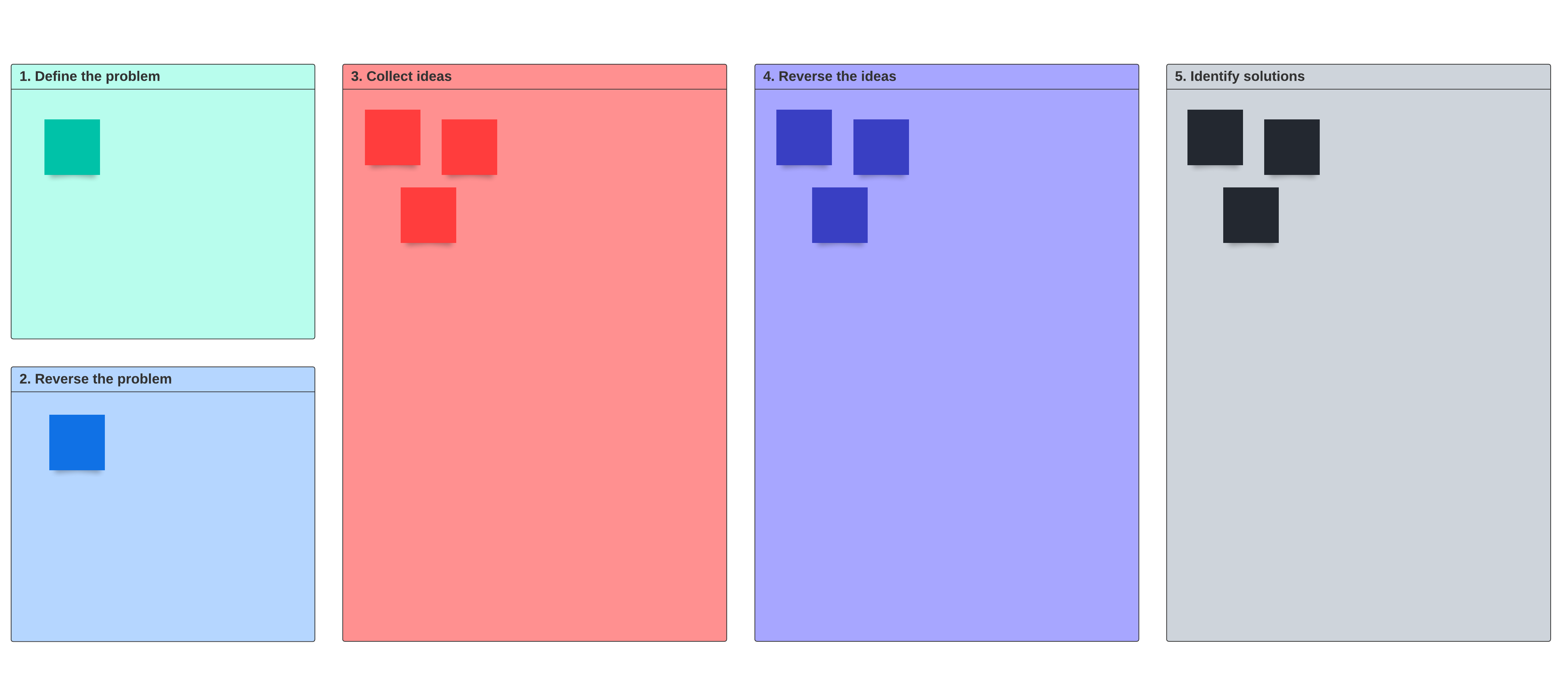
- Mind mapping: Mind maps are non-linear diagrams used to organically capture ideas and make connections to idea branches loosely connected to a main starting topic or question. These diagrams can help your brainstorm to be more visual from the start instead of over-indexing on chat and writing out lengthy explanations of ideas. You can even use Lucid's AI capabilities to create a mind map and generate branching ideas, fueling your creativity.
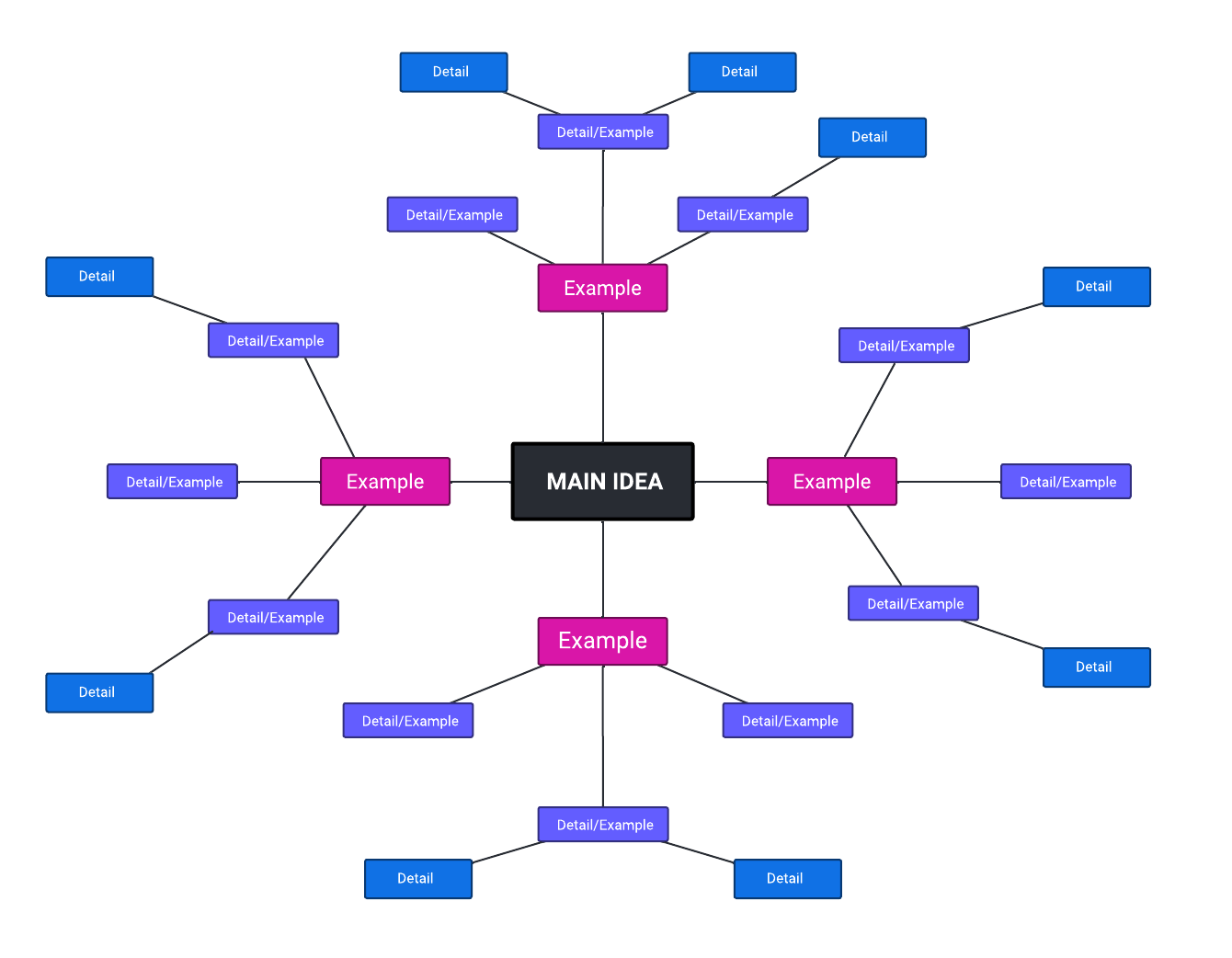
Try out these templates or dozens of other brainstorming techniques and find which ones work best for your team!
Misconception #3: Brainstorming is only for net-new ideas
Nope! Consider also hosting a brainstorming session for:
- How you might repurpose or combine existing work into new deliverables
- How you could revisit a previous brainstorming board for insights that may have been overlooked, instead of starting from scratch
- Ways you can eliminate duplicate workflows and consolidate work across cross-functional teams
Tips for unlocking deep engagement during team brainstorms
Even teams that have the fundamentals and best practices down pat might find their brainstorms still falling flat on occasion. Don’t fret—this is common and doesn’t mean you are doing something wrong. Many companies are still struggling to effectively brainstorm as remote or hybrid teams.
Effective brainstorming is part science, but also part art and magic: You can do all the right things to cultivate an environment for effective collaboration, but you ultimately can’t force engagement.
If you’re looking to increase engagement on your team, here are some tips that can have a lasting positive impact on your ability to host effective in-person or virtual brainstorming sessions.
Leave your role and title at the door
The phenomenon of the HiPPO (highest-paid person in the office) dominating brainstorming discussion exists for a reason and is a symptom of people bringing too much of themselves and their ego into a brainstorming session instead of focusing on the quality of ideas. If you can encourage people to leave their roles at the door (i.e., a designer doesn’t only have to share an idea about design, and an engineer can share marketing ideas), people will be less intimidated to share ideas—and you might be surprised when people are willing to share.
Follow up and follow through every time
No one likes to feel like they’ve wasted their time, and it’s easy to get disenchanted by regular requests to brainstorms when you see your ideas go unused.
If you're facilitating a brainstorming session, you need to take the follow-up steps seriously so the attendees know exactly what action is being taken as a result of the ideas that were generated. And If there are reasons for not proceeding with a certain idea, provide context on why—when you are transparent in your reasoning, you can help people still feel valued and you won’t discourage them from sharing weird, crazy ideas in the future.
Build real relationships with the people you work with
Don’t worry—this is not a kumbaya call to know the intimate details of the lives of all your team members. But knowing what motivates someone professionally, what they’re passionate about, how they think, and what conditions allow them to be their most creative is crucial to stepping up your brainstorms.
Visual collaboration unlocks best-in-class brainstorming
If you’re still struggling to see the purpose of brainstorming—especially as remote work has kept you from your physical whiteboard sessions—it might be that you’re simply using the wrong platform for collaboration. This is where the Lucid Visual Collaboration Suite comes in.
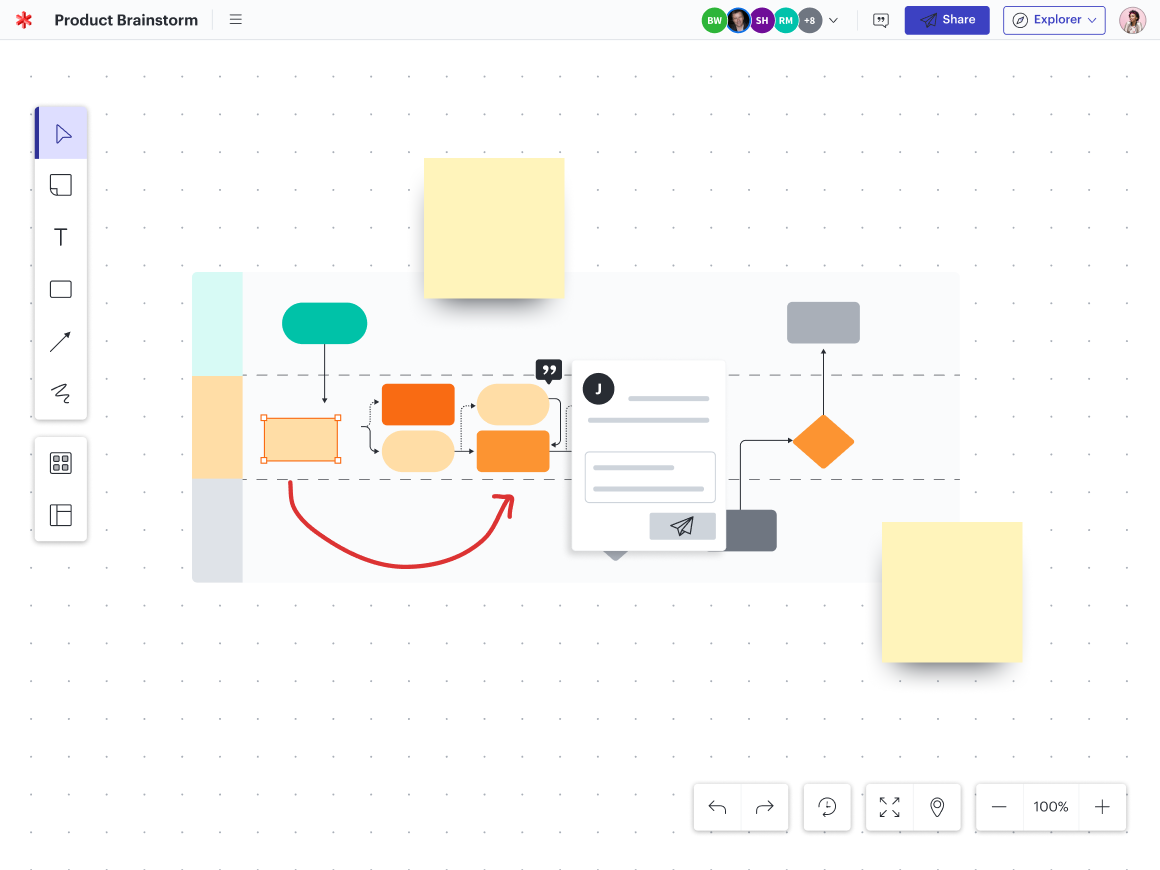
Simply using a Lucidspark board as the home for all of your brainstorming sessions solves many of the problems we outlined in the intro of this guide:
- Teams converge too quickly around a small number of ideas: Brainstorming in Lucid is easier because you have an infinite canvas for dropping ideas in any direction and making visual connections between ideas with connecting lines, instant emoji reactions, and embedded notes on sticky notes. Using a text-heavy document or spreadsheet as the host document for brainstorming makes it harder for people to participate and jot down ideas quickly. Though you can brainstorm in any product within the Lucid Suite, Lucidspark will be best suited for this part of your workflow.
- Unengaged collaborators bring down the energy while loud participants dominate discussion: With Lucid, it’s easier to manage a variety of collaboration styles—even extreme ones. The visual canvas creates a more even playing field where introverted collaborators can use sticky notes to capture their more abstract ideas in writing before sharing them with the team, while more extroverted collaborators can better channel their excited energy with features like timers and voting sessions.
- Ideas get lost while participants wait to share: When you set up team folders and create a Lucid team huddle board for every recurring meeting, you don’t ever have to worry about ideas being lost because you’re creating rich, effortless documentation as you go along. Your board will be an enduring artifact of every discussion you’ve had that you can revisit, build off of, or even turn into a template for future projects.
- Brainstorms are scheduled without a clear goal: Because Lucid tightly integrates to the rest of your tech stack, you can always have your brainstorming board embedded in all of the places where you need to be able to see and build on your ideas. You can even embed important documentation and context directly into your Lucid board, saving you time on having to build out an agenda from scratch.
For modern teams looking to replicate all the best parts of in-person brainstorms into remote and hybrid work settings, the Lucid Suite provides the foundation for uncovering your best ideas and driving innovation.
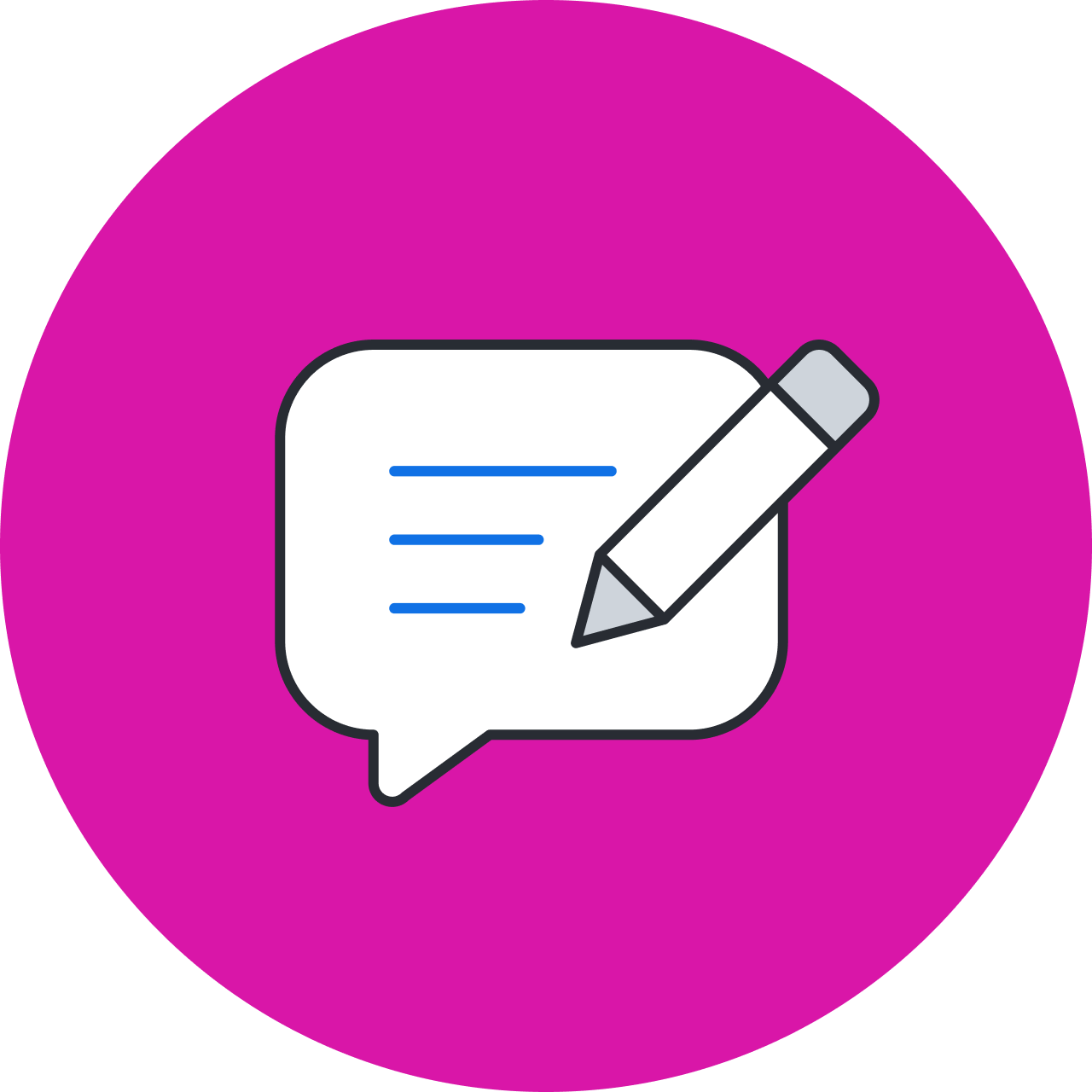
Start your journey to better brainstorming—get our free worksheet and checklist for evaluating visual collaboration platforms.
Explore moreAbout Lucid
Lucid Software is a pioneer and leader in visual collaboration dedicated to helping teams build the future. With its products—Lucidchart, Lucidspark, and Lucidscale—teams are supported from ideation to execution and are empowered to align around a shared vision, clarify complexity, and collaborate visually, no matter where they are. Lucid is proud to serve top businesses around the world, including customers such as Google, GE, and NBC Universal, and 99% of the Fortune 500. Lucid partners with industry leaders, including Google, Atlassian, and Microsoft. Since its founding, Lucid has received numerous awards for its products, business, and workplace culture. For more information, visit lucid.co.
Related articles
Understanding the 3 collaboration styles—and how they can work better together
Explore the three common collaboration styles—introspective, relational, and expressive—their natural areas of tension and common ground, and resources to help them work best together.
6 practical tips for more efficient collaboration
Here are some tangible ways to increase the efficiency and effectiveness of your team's collaboration.
Collaboration reinvention: PowerPoint pitfalls
Don’t get us wrong: PowerPoint has its place. But just because you’ve been using it so long, is it really the best tool to get the job done?
Asynchronous collaboration guide: How to improve team collaboration without another meeting
Learn how to build an asynchronous collaboration strategy that increases efficiency, engagement, and innovation.
